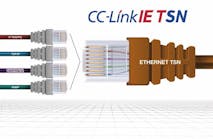Maintaining a thriving business with Industry 4.0
When Henry Ford’s vision of mass production of the automobile began to replace horse-drawn carriages, the manufacturing industry entered the beginning of a new era. Assembly lines were adopted, processes were streamlined and profits increased. Throughout the years, that progress has only grown. Today’s manufacturing industry is bordering on a period of radical transformation yet again as new and innovative technologies are raising the expectations of executives worldwide.
The most recent trend, Manufacturing 4.0 (M4.0), promises improvement in data exchange and automation throughout the industry – as long as organizations can embrace the new advantages and overcome the challenges it brings. M4.0, otherwise known as Industry 4.0, characterizes automation and data exchange in an industry defined by innovative technology. Its broad spectrum includes cyber-physical systems, cloud computing, smart factories and the Internet of Things, which bring a host of new elements that impact operations.
A recent study by Frost and Sullivan, in conjunction with NTT DATA Services, analyzes the critical issues M4.0 presents and offers manufacturers solutions to help navigate this revolutionary trend.
The role of IT in M4.0
As IT becomes integrated into manufacturing processes, its role in industry is more crucial than ever. Many companies are currently burdened by aging systems based on outdated algorithms that do not play well together. While these algorithms may have worked in the past, they will not survive in a manufacturing future based in collaboration, decentralization, digitization and optimization.
The study found executives seeking M4.0 can push their organization to its potential with an “invest to transform” mindset. For example, in the energy industry, companies have shifted away from siloed oil field operations to integrated, collaborative production fields. Comparatively, the power industry has built itself on digitization, enabling millions of dollars in savings. In both cases, investments in IT integration propelled the transformation to M4.0, creating more progressive verticals.
Assessing challenges
While most admit the application of M4.0 technologies is compelling and positively impacts business, the sheer complexity of the road map to M4.0 can be daunting. More than 35 percent of respondents identified “understanding [M4.0’s] benefits and challenges” as their most significant challenge in adopting the new trend. To counter this confusion, the study highlights six of the most critical issues in today’s manufacturing ecosystems, which allows executives to better align internal practices and ensure success for their business in the digital era.
The most pressing issues fall under two umbrellas: technology and operations. On a technological level, our world today promotes the fastest, most innovative technological processes possible – in any industry. Just as doctors seek the most efficient way to perform a surgery, manufacturers must strive for the most effective manner of creating products and services.
Organizationally, manufacturers must adjust their cultures and professional expectations to fit the new technology-based ecosystem. After all, if the basic products and offerings of the company are being produced by such transformative materials, leadership must employ transformative individuals to keep the company moving forward in such a competitive industry.
Critical issue: Technology
As an organization works toward M4.0, it must inevitably face the need to keep up with new technologies in the industry. In manufacturing, the factories themselves have evolved into increasingly more automated, technology-based “factories of the future.” As new production models and devices emerge, manufacturers must learn how to embrace the abilities they bring.
In the research, 55 percent of respondents stated their intentions to invest in network-enabled equipment over the next five years; meanwhile, IP-enabled factories are becoming more commonplace. If these are visible changes in the industry today, what enormous shifts will take place 10 or 20 years down the road? As manufacturers look toward the future, they must address the nature of these factories.
Within the factories, manufacturers face the burden of ensuring individual technologies are up- to-date and used effectively. Transformative technologies can pave the way for new methods of increasing profitability, nontraditional operational models and new business offerings, including performance-as-a-service sales. With 32 percent of study respondents identifying operational efficiency as their biggest driver toward M4.0, effective use of new technologies is paramount.
Naturally, with the power of technology comes the threat of cyberattacks. Customers agree the increase in connected devices presents a greater risk of information exposure, and therefore, investments in cybersecurity measures are absolutely necessary. Manufacturing companies looking to protect their information face threats from attackers who understand how to remain invisible. Breaches may go unnoticed for days, weeks or even months at a time. If an organization wants to avoid being the next victim of a breach, it must take cybersecurity seriously.
Critical issue: Operations
Organizationally, manufacturers cannot expect new technology to have no effect on their daily operations. As processes become more automated, the door opens for human workers to take on more fulfilling positions that require more creativity and ingenuity. As a result, organizations on the road to achieving M4.0 are finding their employees are showing more innovation and creative inclination than ever.
Now, manufacturers must manage internal processes that are rapid, continuous, collaborative and oftentimes disruptive in order to drive growth, new products and services, operational efficiencies and competition. Gone is the expectation of simple site-functional operational excellence; instead, we see enterprise-scale excellence achieved through new best practices.
With this shift comes a different breed of employees – those who strive to be just as collaborative, innovative and disruptive as the technology they work with. As young new professionals enter the workforce, manufacturers must be prepared to work with this new breed to achieve M4.0.
Perhaps most importantly, an organization cannot survive, much less thrive, if the leadership does not – or cannot – handle transformative technology and innovative employees. Modern leaders in the manufacturing industry must understand the new collaborative nature of the M4.0 trend. By embracing progress toward M4.0, they can transform the culture of their organization.
Investing in transformation
To truly transform, leadership must first understand the best practices for achieving M4.0. Each practice stems from a separate concern, be it technology, operational or cultural, so companies should understand how each solution integrates with others. From there, executives can determine how to tackle the challenges facing their organization.
Some practices respond to the critical issues pertaining to technology. Perhaps an organization has a high risk of cyberattacks because its IT investments have become points of vulnerability. Or, there might be a need for technology updates because the company is using long-outdated systems. It may even be necessary to face the challenge of perceiving IT as a cost center.
Best practices in cases of technology often revolve around using IT as it is meant to be used in today’s fast-paced workforce. The organization struggling with technology evolution might need to streamline its point solutions into one value chain, which drives enterprise-wide modernization initiatives. The company with cost concerns, however, should shift its viewpoint to understand IT as a digital fabric with the power to streamline operational and system processes, which can cut long-term costs. Finally, by using modernized IT infrastructures, the organization can ensure it is more strongly protected from cyber threats.
On the opposite end, then, are the challenges related to internal operations. Some companies are challenged by lack of support from executives, while others struggle with too much focus on site-functional excellence, or successes only in one location, over enterprise-functional excellence, successes across the entire organization. Best practices recommend both types be addressed under an invest-to-transform ideology.
Change does not happen immediately, but companies can begin small with a structured roadmap outlining reasons to work toward M4.0. This allows the entire organization to focus on enterprise-wide excellence while encouraging executives to maintain modern technological standards.
Understanding what challenges the company faces and how to work through the complex layers of the industry ecosystem can be difficult. To assess roadblocks and determine best practices, consider the following questions:
- Do you have a 360-degree view on what you need to do to transform your manufacturing operations?
- Do you know why you need to transform your manufacturing operations? What are your strategic business objectives?
- What is the purpose of the core transformation elements? How do investments in these aspects help you achieve your strategic objectives?
- Have you identified areas of quick wins and strategic wins as a result of your transformation?
- Do you have senior leadership buy-in and investments to support this transformation exercise?
- Have you looked at ROI models to understand outcomes and benefits?
- Are you able to establish progress checkpoints to prototype and iterate in order to achieve the best solution?
The answers to these questions can guide manufacturers toward best practices most applicable for them.
Achieving the transformation
Undertaking a full-scale modernization process while relying solely on internal resources can be risky, expensive and time-consuming. Overall, manufacturers have limited IT resources they can truly count on to solve their problems and completely achieve M4.0. As a result, manufacturers must seek a trusted, reliable provider for IT services and solutions, which allows executives to focus on the transformation within their organization without the need for learning and managing the new materials required.
The ideal IT modernization partner must possess qualities such as:
- Capability and competency: Partners should exhibit high levels of experience and a successful track record, as well as the ability to future-proof IT infrastructure and provide organizational change-management.
- Culture fit: Because partnerships typically last many years, key attributes must include: sustained delivery excellence, bench strength, strategic geographic presence, technology road maps, domain expertise and application development capability.
- Integration expertise: As manufacturing environments become more agile through Industrial Internet of Things (IIoT) and new technology advancements, partners should be able to seamlessly integrate systems. Look for demonstrable expertise and a track record in multisite integration and the ability to manage complex, lengthy projects.
Between trusted providers and enthusiastic leadership, manufacturers can not only overcome the challenges they face, but also lead their competitors in the journey of achieving M4.0.
Embracing the new era
The next generation of manufacturing is upon us. No longer can companies focus solely on their site, processes and close clients. Instead, they must invest in the transformation of the entire enterprise, enabling them to create an organization that is smart, innovative, secure, connected and disruptive.
With a thorough understanding of critical issues and best practices that can counter them, an organization can thrive in the modernized industry. The future of manufacturing and achieving M4.0 may seem daunting, but with the right planning, updated technology and trustworthy partners, an organization can promote more efficient processes. As a result, M4.0 can allow modernized manufacturers to see enhanced levels of customer satisfaction and drive profitability to levels previous generations have not been able to accomplish.
Doug Reeder is in the Office of the CTO, NTT DATA Services, where he helps global organizations define and achieve their business objectives, develops new capabilities and competencies and implements strategies to advance top line and bottom line growth for customers and the company. He has nearly 25 years of experience in the information technology and telecommunications industries and is an accomplished business technologist, strategist and thought leader with a patent in wireless technology (assigned to Apple Inc.). Reeder has degrees in economics and finance and a Master of Business Administration from the University of Texas at Dallas.




